
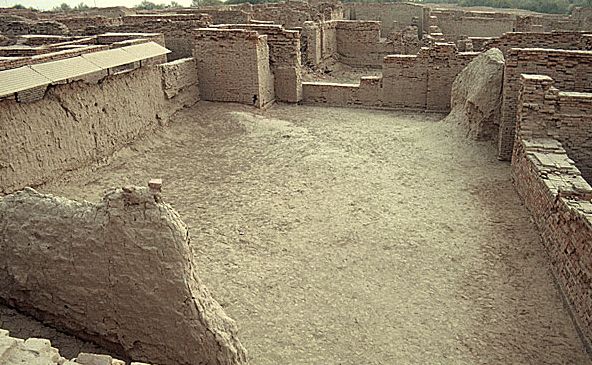
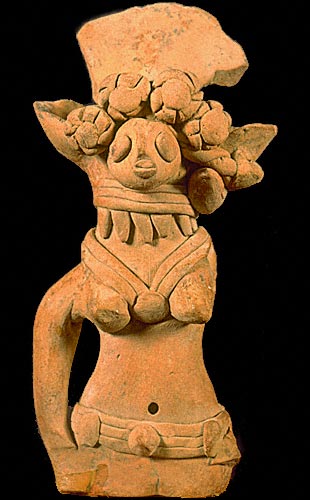

Archaeological Treasure of Pakistan



Pakistan is a unique country where the origins of great civilizations and religions are found in abundance. Civilizations as old as 7000 BC and origins of Buddhism at Taxila and northern areas, besides the remains of Rehman Dheri Site (4000 - 3300 BC) and the famous Indus Valley civilizations abound Pakistan. The area which is now under present day Pakistan has seen traders and invaders both from south (Arabian Sea), from north, west and northwest (Iran and Afghanistan) and travellers from China, besides the marching armies of the Alexander of Macedonia, Mongols and Moguls that trampled and conquered the lands now in Pakistan. The last foreign domination was that of the British that brought an end to the Muslims rule of Moguls, till the fateful day of 14 August 1947 when Pakistan emerged as a Muslim state on the world map to usher in the Muslim rule once again.
Seen in this perspective, the archaeological remains date back to the Mehrgarh civilization that thrived about 7000 BC, a period that coincides with the Egyptian civilization. Thus there is wide variety of architectural structures and their remains describing how history unfolded in this part of the world, and what remains of the earlier civilizations, Buddhist origins, Hindu, Muslim and British architecture. A discovery in 1920-21 in general area Sahiwal, Pakistan first unearthed the presences of Harappan period remains and then there was no ending. The excavations continued to unearth architecture of Harappa, Taxila, Moenjodaro, Kot Diji, Takht Bhai, Rehman Dheri and Hund. And more was yet to come when in the desolate and treeless vast tracts of Balochistan, the remains of one of the oldest civilization of the world, Mehrgarh were discovered. With such a rich archaeological treasure, Pakistan is proud to be the possessor of some of the oldest and rare archaeological heritage of the world..
Going chronologically, the faded civilizations best suit the sequence of Mehrgarh (7000 BC), Rehman Dheri (4000 BC), Kot Diji and Amri (3600-3000 BC - 2500 BC), Indus Valley Civilization (Moenjodaro - Harappa - 3000 - 1500 BC) and later Taxila (518 BC onwards).
While the major chunk of remains are found in Punjab, Sind and Balochistan, the Northern Areas of Pakistan are also rich in archaeological finds and rock art dating back to pre-historic and early days of Buddhism. The above photo and many more were shot in 1994 as an assignment of the German science magazine 'Bild der Wissenschaft' in cooperation with Prof. Harald Hauptmann of the 'Heidelberger Akademie der Wissenschaften'. Read More ...
|
|
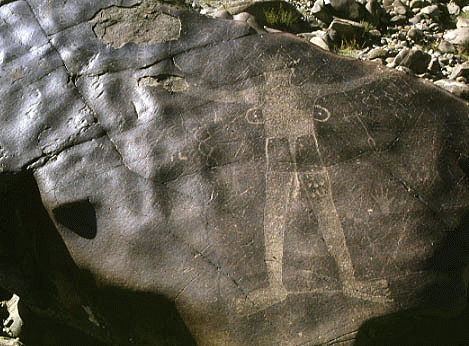 |
|
Three stupas on the 'altar-rock' near Chilas (800 AD). Stupa in the middle is approximately 1 metre high. |
Pakistan Post has also been issuing stamps on the archaeological treasure of the country regularly from time to time. Some of these stamps are as under:
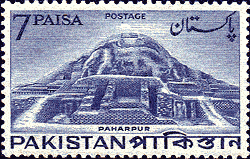
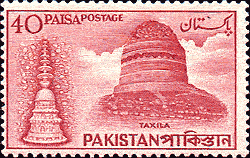
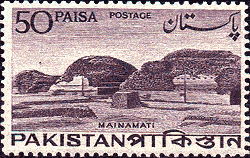
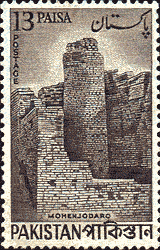
Left to Right (Issued 16 September 1963): Paharpur (former East Pakistan) - Taxila - Mainamati (former East Pakistan) - Moenjodaro
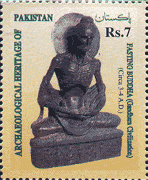
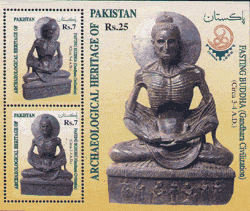
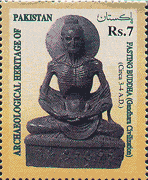
A set of two stamps was issued by Pakistan Post on 21 July 1999 to pay homage to Buddha and its masterpiece "Fasting Buddha" statue (Lahore Museum)
Related Sites:
|
A Brief
Introduction of Pakistan’s Archaeology |
List: Archaeological Sites |
Akra (NWFP)
|
| Rockcarvings and
Inscriptions along the Indus The Buddhist Tradition |
Archaeology in Pakistan
|
|
| HOME PAGE | Copyright©JalalsPages - 2005 |